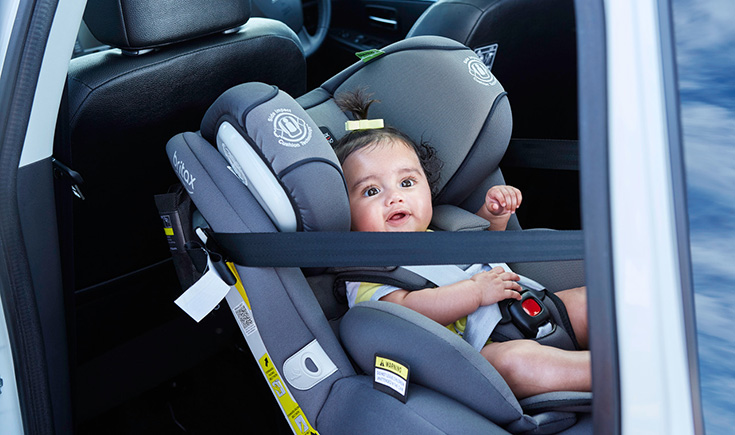

Australian Law mandates that children under 6 months must use an approved, properly fastened and adjusted rear-facing child restraint. From then, children 6 months to 4 years must use either a rear-facing or a forward-facing child restraint with an inbuilt harness.
Many parents are keen to make the change as soon as possible, particularly if their baby gets unsettled in a rear-facing seat. But, should we be in a hurry to move them? Here we look at why rear-facing seats are the safetst option, and why you might consider extended rear-facing after 6 months.
Why are rear-facing seats safer?
Neuroscience Research Australia and Kidsafe recommend rear-facing restraints for children up to four years of age. Multiple studies and research show that rear-facing seats are safer than forward-facing seats. A 2007 study reported that 1-2 years olds are actually five times safer in rear-facing seats. This is because their head and neck are fully supported and cradled in the car seat in the event of a crash. Infants have relatively large heads and weak necks, which puts them at high risk of serious injury if the head and neck aren’t fully supported.
Rear-facing is actually the safest way for everyone to travel, not just babies, so consider your own seat choice when using buses and trains.
What are the laws regarding rear-facing seats in other countries?
Australia is behind other parts of the world when it comes to car seat safety. In many states in the US and countries in Europe, children must stay rear-facing until they are 2 years old. In Sweden it’s not uncommon for kids to stay rear-facing until they are 4.
What if my child doesn’t like rear-facing and where do they put their legs?
Some babies just don’t like their car seat. Usually this is because they’re unable to freely move, and they don’t have the same physical comfort they’re used to from you. Read our strategies to solve car seat crying.
Because kids’ joints aren’t fully formed they can actually sit comfortably with their legs crossed or in a ‘frog leg’ position when rear-facing. You may even notice that a forward-facing child doesn’t like their legs dangling and needs leg support, much in the way we find it hard sitting on a tall bar stool without a cross-bar to rest our feet on.
How do I know when I should move my baby to a forward-facing restraint?
While you’re legally able to turn your baby’s restraint to forward-facing at 6 months of age, it’s important to remember that age is just a guide. The height of your baby is a better indicator of when they’re ready to change to the next restraint from a safety perspective.
Once your child is too tall for their rear-facing capsule they can be moved to an approved rear-facing or forward facing restraint. Only move your child out of their seat if they have exceeded the upper height markers on their current restraint, and can no longer sit comfortably in it.
You need to make the decision about extended rear facing based on what is right for your individual circumstances, but it’s important to educate yourself so that you make the safest decision.
What are the car seat options for my baby?
- Baby capsule – 0 to 6 months (or slightly older if they still fit) and rear-facing
- Forward facing restraint – 6 months to 4 years
- Convertible car seat: 0 to 4 years – Some models allow rear-facing for up to 12 months, and others up to 2.5 years before converting to forward-facing
- Convertible car seat: 6 months to 8 years – Forward-facing car seats that can be converted to a booster seat after 4 years.
- Convertible car seat: 0 to 8 years – Allows your child to face rearward for 12 months, and then converts to forward facing. Some models convert to a booster seat after 4 years.
Check the Child Car Seats website for car seat models that are considered safe. For peace of mind, have your car seat installed by an authorised fitter.























